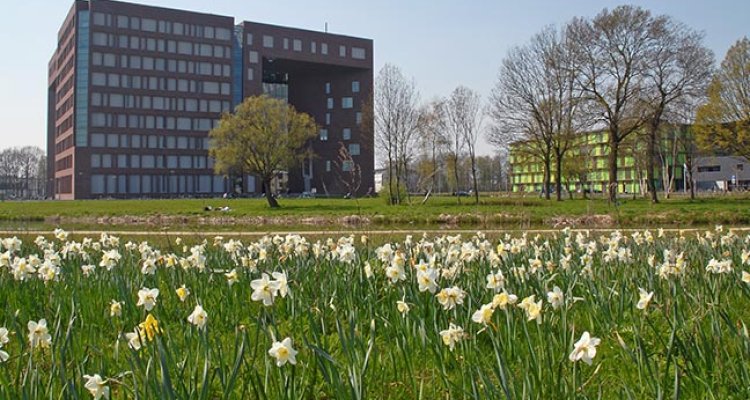
CO2 footprint
Our carbon footprint tells us how much CO2 Wageningen University & Research emits every year. Our carbon footprint is determined in line with the ISO 14064-1 norm, based on the Greenhouse Gas Protocol.
In 2018 49% less CO2 was emitted compared to the reference year 2010
Most of the greenhouse gas emissions from WUR originate from buildings, business flights, commuting and agricultural land. WUR reduced its CO2 emissions by buying 100% green wind energy, lower gas consumption by new-builds and renovations, and expanding the geo-thermal system at the campus in Wageningen.
WUR itself generates sustainable energy, using wind turbines, CHP installations and solar panels. A large part of this energy is not consumed by Wageningen UR itself, but is supplied back to the energy grid. The level of CO2 reduction has been quantified in a ‘carbon compensation footprint’. In 2018, the compensation footprint was 13% higher than the total CO2-footprint.